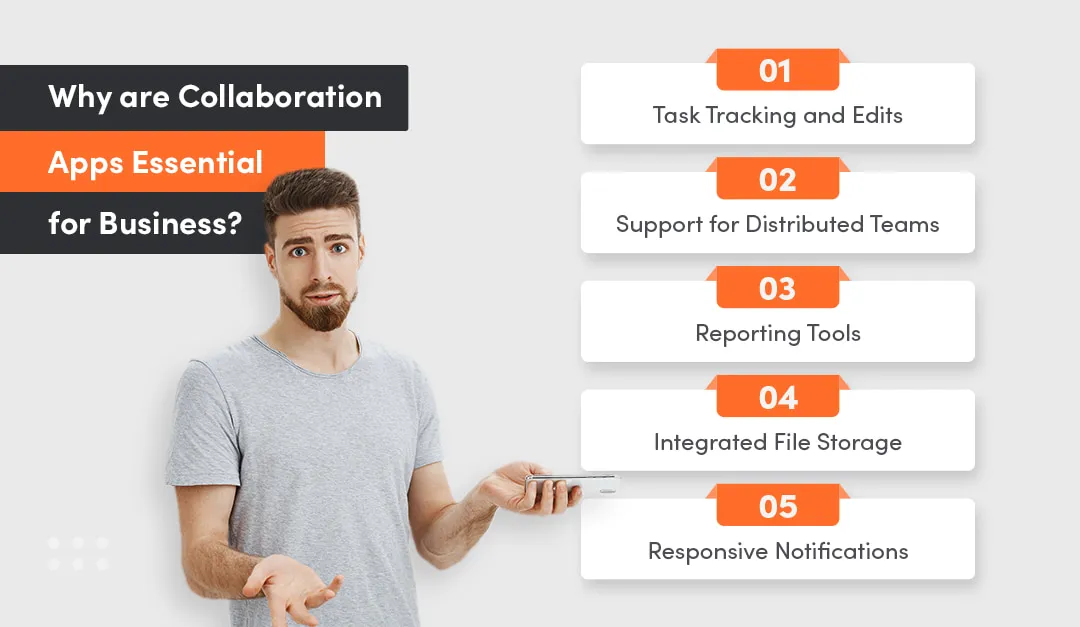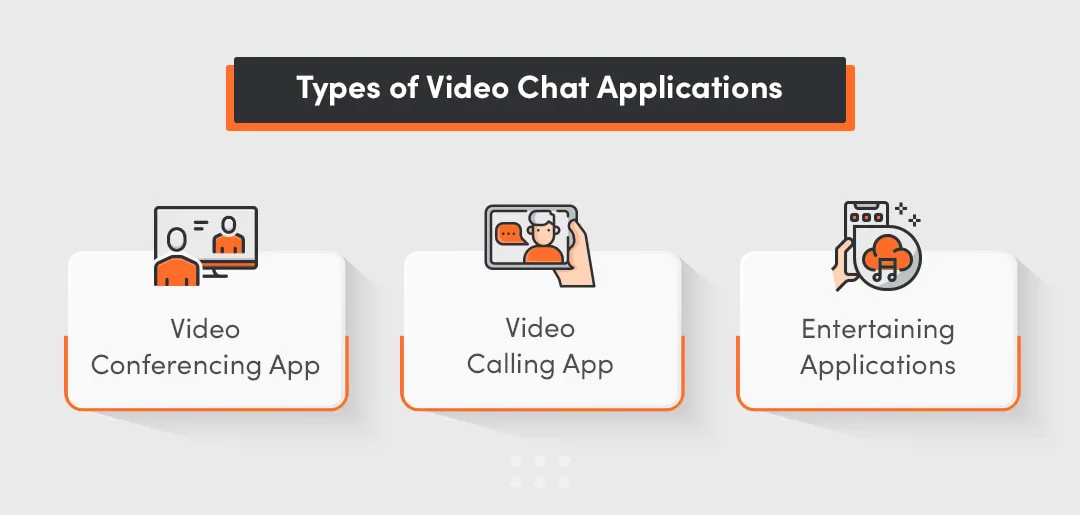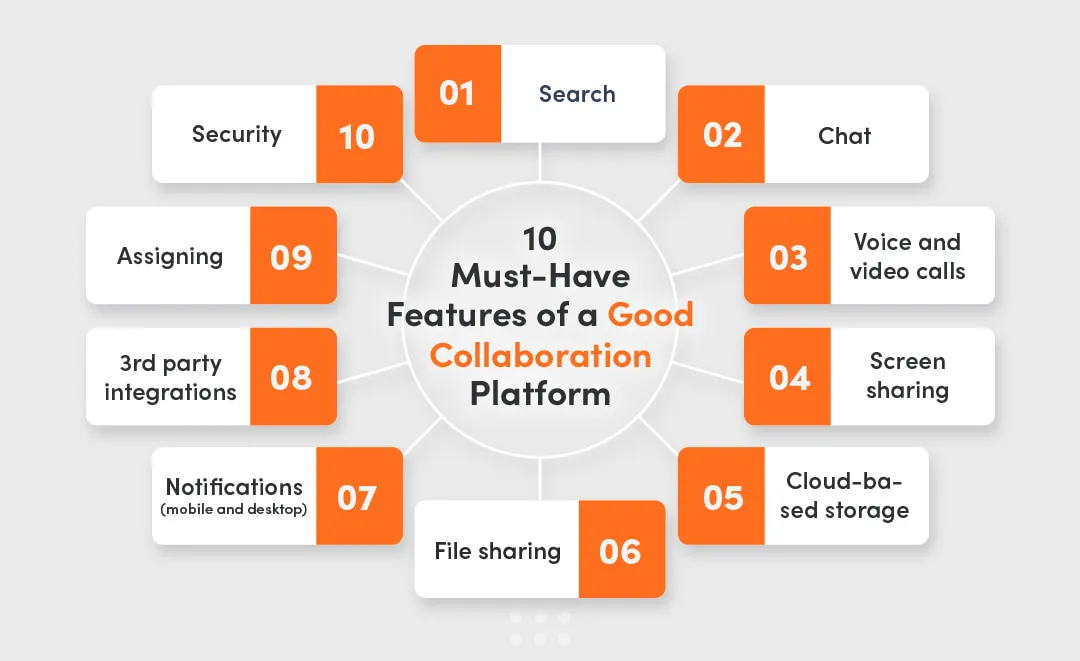Online collaboration software has become essential for modern teams, especially with the rise of remote and hybrid work. These tools enable efficient information exchange, process automation, and streamlined tracking task management—making it easy for team members to stay connected, no matter where they are. Research from 2024 shows that platforms like Asana, Slack, and Microsoft Teams can boost productivity by up to 20-30%, primarily through reducing unnecessary meetings and improving communication channels
While many ready-made tools are available, more organizations are considering building their own custom collaboration software. This approach allows them to tailor functionalities specifically to their unique needs, maintain full control over data, and enhance security. In this article, we’ll explore the primary advantages of online collaboration software and why investing in a custom-built solution might offer greater long-term value than using off-the-shelf options. You’ll also learn how to build such software and which features to include.
What will you learn from this article:
- How do collaboration software platforms enhance team efficiency compared to traditional communication tools?
- What makes collaboration applications indispensable for businesses, especially when managing remote teams?
- What are the critical stages and considerations in developing a custom collaboration app from scratch?
- Why are collaboration apps essential for business?
- How to build a collaboration app from scratch?
How does collaboration software for business differ from communication platforms?
Before we dive into how to create our own collaboration platform, we’ll need to define what that actually means and how it differs from a standard communication platform.
Communication tools are a broad spectrum of programmes that we’ve all been familiar with for many years. Pretty much any instant messaging app comes under this umbrella, such as Facebook Messenger or even WhatsApp.
Basic messaging apps are limited in their ability to manage complex projects. Effective collaboration software provides not only a communication layer but also data sharing, project tracking, and real-time updates, helping teams collaborate seamlessly across locations.
Here are some examples of project collaboration software that you might have seen before:
- WebEx
- Google Docs or Google Drive
- Trello
- Redbooth
- Asana
So, Why Are Collaboration Apps Essential for Business?
Basic communication platforms such as instant messaging and video communication software can only go so far when it comes to collaborative task management. To really get the best out of a team remotely, any business needs team project management platform.

Here are a few key features of collaboration apps that will prove how essential they can be to your business:
- Task Tracking and Edits: it might seem a bit hectic to have a whole bunch of people working on the same project at the same time at first glance, but any good team project management tools will allow you to see who made the edits, and what the project looked like before any edits were made.
- Support for Distributed Teams (Remote Collaboration): your remote teams members can be anywhere in the world while they collaborate in real-time, provided that they have a stable internet connection and they are in a reasonable time zone!
- Reporting Tools: you should be able to quickly generate a list of all the activities associated with your project through the software you are using, which will save your entire team a lot of time in the long run. This also helps with the time tracking of the project.
- Integrated File Storage: with a half-decent internet connection and computer processor, the time it takes for one user’s action to show up on another user’s device should be pretty much instantaneous. This is even the case on mobile apps.
- Responsive Notifications: never have to worry about going searching through files stored locally on your hard drive again as all of the documentation associated with your project will be stored in the same place, on the cloud.
Try our developers.
Free for 2 weeks.
No risk. Just results. Get a feel for our process, speed, and quality — work with our developers for a trial sprint and see why global companies choose Selleo.
Collaboration App Market: Is there still room for a new product?
The collaboration software market is poised for significant growth worldwide. According to projections, the market's revenue is expected to reach an impressive $15.28 billion by 2024. Additionally, it is estimated that from 2024 to 2029, the market will experience a steady Compound Annual Growth Rate (CAGR) of 1.70%, leading to a market value of $16.62 billion by the end of 2029.
In terms of revenue generation, the United States is expected to dominate the global market, with projected revenues of $7.84 billion in 2024.
Collaboration software is gaining popularity among remote teams as it enhances productivity and streamlines communication. In recent years, the collaboration software market has become highly competitive, reflecting the growing interest in such solutions. Many companies are seeking tools that not only enhance team efficiency but also facilitate communication and project management. In this context, it’s important to note that there is still room for introducing new project management tools. However, to succeed, such tools must be tailored to the specific needs of the market and often focus on a particular niche segment.
Creating collaboration software that meets your company's unique requirements can yield better results than using generic tools like Asana. Furthermore, well-designed solutions can support other startups, which in turn contributes to increased revenue for your business. Let’s explore how to begin this process.
How to build a collaboration app from scratch
Building custom-made, collaboration software from the ground up is no light work, but it might not be as difficult as you first thought.

There are four key things to do in the planning stages of this process, and these are:
- Build a collaboration tool MVP: after you’ve put down your initial ideas of what you want from your app, it’s time to build a minimum viable product. You could create this in the form of a mobile app so that it requires the least amount of programming and the minimum of features.
- Build your development team: in all walks of business life, choosing the right people to work on your project with you is key. As a startup founder, you’ll know this already. Just remember that it’s as important for software development as it is for any other area of the growth of your business.
- Decide on a tech stack: which technologies are you going to use throughout the development of your app? There are all kinds of helpful tools out there that will be endlessly helpful to the process, so do your research here so that you can choose wisely.
- Consider UX/UI design: having an app that looks good is just as much about being appealing to potential consumers at face value as it is about being easy to use once you actually get into it. It’s no good having a tonne of cool features if no one knows where to find them.
10 must-have features of a good collaboration platform
But what exactly does a team project management app need to include? Learning and fully understanding the key features could be the difference between a super successful or a failed project.

- Search: we mentioned UX and UI earlier on, and how users should be able to find all of the features of the app with ease. One of the easiest ways for them to do this is through a search tool. Take Mac OS Spotlight, for example. The whole operating system would be nowhere near as easy to use without it.
- Chat: naturally, team members should be able to communicate with one another quickly and efficiently throughout their team collaboration.
- Voice and video calls: chat is great to have open alongside the project collaboration but sometimes, you’re going to want to check in for a team meeting and be able to see each other face to face as well as hear one another’s voices. Video conferencing tools allow you to see that everyone is on the same page.
- Screen sharing: this is a great tool for troubleshooting an individual team member’s issues, or working on a specific sub-task together. It saves a lot of time in having that team member simply describe what they are seeing on their screen!
- Cloud-based storage: we talked earlier about how having all of the documentation for your project in one place makes organisation much easier.
- File sharing: moving on from that, being able to share files and folders accessible to the whole team can open up a lot of potential and time-saving. You should also be able to make certain folders visible by certain people only in the interest of privacy and security.
- Notifications (mobile and desktop): as well as mobile notifications and notifications within the desktop app, you should consider implementing browser notifications for users who are running the app through their browser. All users should be able to receive instant notifications when required.
- 3rd party integrations: you can take your app one step further by allowing it to integrate with a 3rd party, such as the operating system it is being run on and the apps included within that. These include tools such as calendars, reminders and notes.
- Assigning: make sure that whoever is running the project, whether that be yourself or another team leader/project manager, is able to appoint certain tasks to certain team members. This means you can get the best out of an individual's particular skill sets. A great tool for inspiration for this is Asana.
- Security: assume that you, or other people, will be using your tool to handle sensitive information so having top-tier security is crucial for this type of application.
Alongside these, you should try to integrate some form of customer support so that if the users of the application have any issues, they can get support. A further good idea would be a system to allow the team leader to allow certain permissions to individual team members. For example, only the leaders of the project may wish to pin messages, edit titles or add and remove members. And when it comes to video conferencing, most people will want the option of being able to turn off everybody’s microphones and webcams as we are used to seeing on the likes of Zoom.
So, consider adding the option of admin privileges to those whose project it is, plus some moderators for the level below of privileges. These team members will likely be able to control some aspects of the project development, but not be able to make over-arching decisions like changing the privileges.
How we create online collaboration tools for our clients
At Selleo, we’ve put together some bespoke pieces of collaboration software for high-profile clients. With the highly-tailored tools we helped them to create, these clients have upgraded their means to collaborate tenfold.
Check out some examples of our work below.
- Mohimmatech: The main scope of the project was to create a working MVP that could be distributed among a small group of testers to gather feedback and test the product. The software development teams also handled the custom design of the platform as well as created a landing page for the project presenting the design and implementation of the solution.
- 9Teams: the SaaS collaboration tool that 9Teams asked for our help with allows for large teams to work together, and with stakeholders!
- Samewave: lightning fast, versatile and visually striking. Business management software company Samewave needed those three things from their collaborative tool, and we delivered.
Conclusions
Collaboration software, offering functionalities beyond basic communication, has become crucial for remote task management and team coordination. The demand for collaboration apps remains high, with a growing market indicating room for custom, niche-focused solutions. Building your own remote collaborative project management software might seem like a monumental task but when you break it down into its key features and planning stages, it is definitely achievable.
You’ll be able to fine-tune the software to be unique to what you want from it. Think about any projects that you are working on, or even the direction you want your business to be travelling in as a whole, and tailor the collaboration app design to suit your needs and other team members.
All you’re going to need is a strong USP (that’s up to you) and a software company to outsource the design work to. Someone that can really bring your vision to life.





